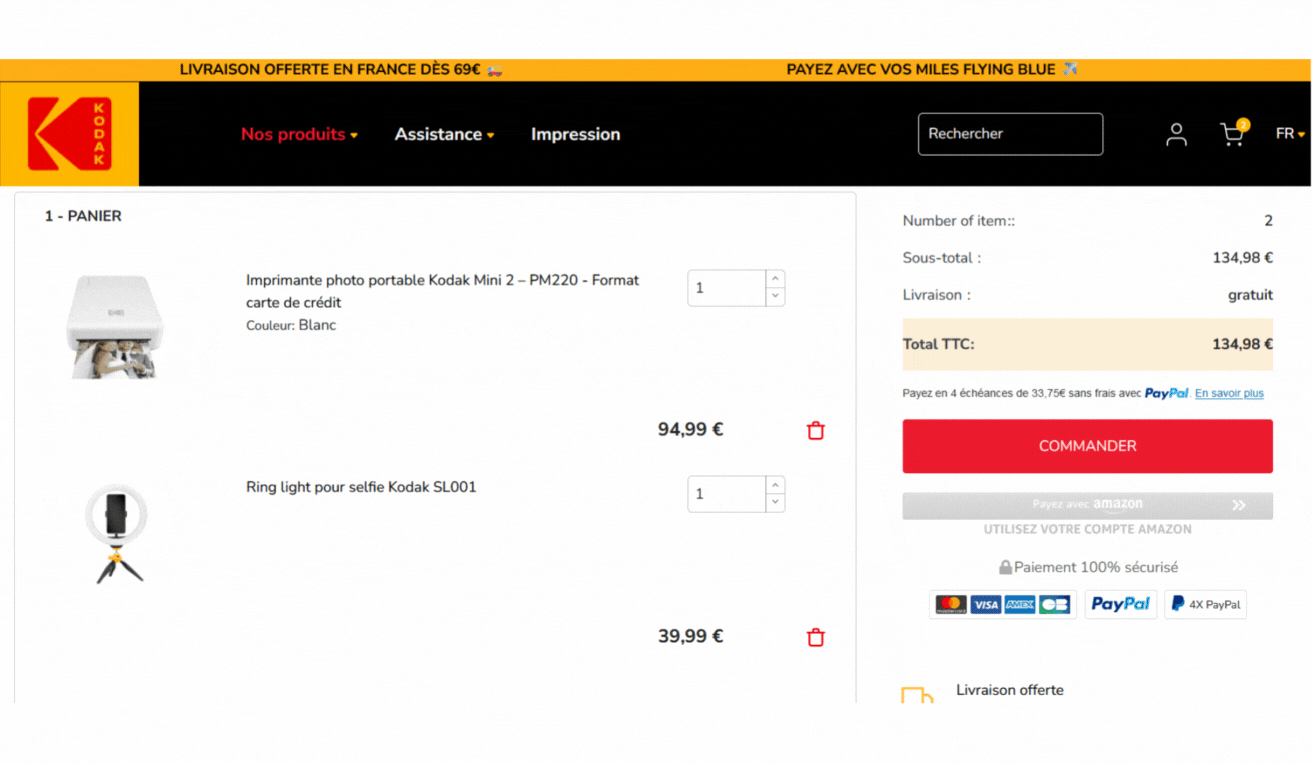Context
Kodak GTCI, a leader in the sale of photo and imaging products, was looking to optimize the online shopping experience in order to reduce cart abandonment rates. The shopping cart validation process was causing problems, particularly at the stage when the customer had to go to the delivery page.
Identifying the problem
Studies show that the average cart abandonment rate on e-commerce sites is around 60%. This figure varies according to sector, but problems of clarity and navigation are often cited as the main causes of abandonment.
For Kodak GTCI, the analysis revealed that the “Checkout” button, which redirects to the delivery page, could be problematic. Its wording lacked clarity, generating hesitation on the part of users, unsure of what the next step entailed. This lack of precision was hypotised as a hindrance to conversion.
Proposed solution
Webyn worked with Kodak GTCI to test a new CTA formulation to clarify the next step in the buying process:
- Old wording : "Commander" (order)
- New wording :"Choisir ma livraison"(Select shipping method)

This change was aimed at better informing the user about the next step, thus reducing abandonment due to lack of clarity.
The results
The A/B test showed a 38% increase in passage to the delivery page, demonstrating that this simple targeted adjustment had a significant impact on conversion. Thanks to this optimization, Kodak GTCI was able to significantly improve the user experience, proving once again that precise adjustments can generate significant results.
This case highlights the importance of focusing on fine adjustments that directly influence the user journey. Even a minor change, such as modifying a wording, can have a considerable impact on micro-conversions, those small steps which, cumulatively, lead to a final conversion. Clarifying specific actions in the buying journey reduces hesitation and improves the user experience, proving that optimizing details can generate significant results without requiring major transformations. A/B testing thus remains a key tool for identifying and maximizing these micro-conversions, helping to improve the overall conversion rate.
